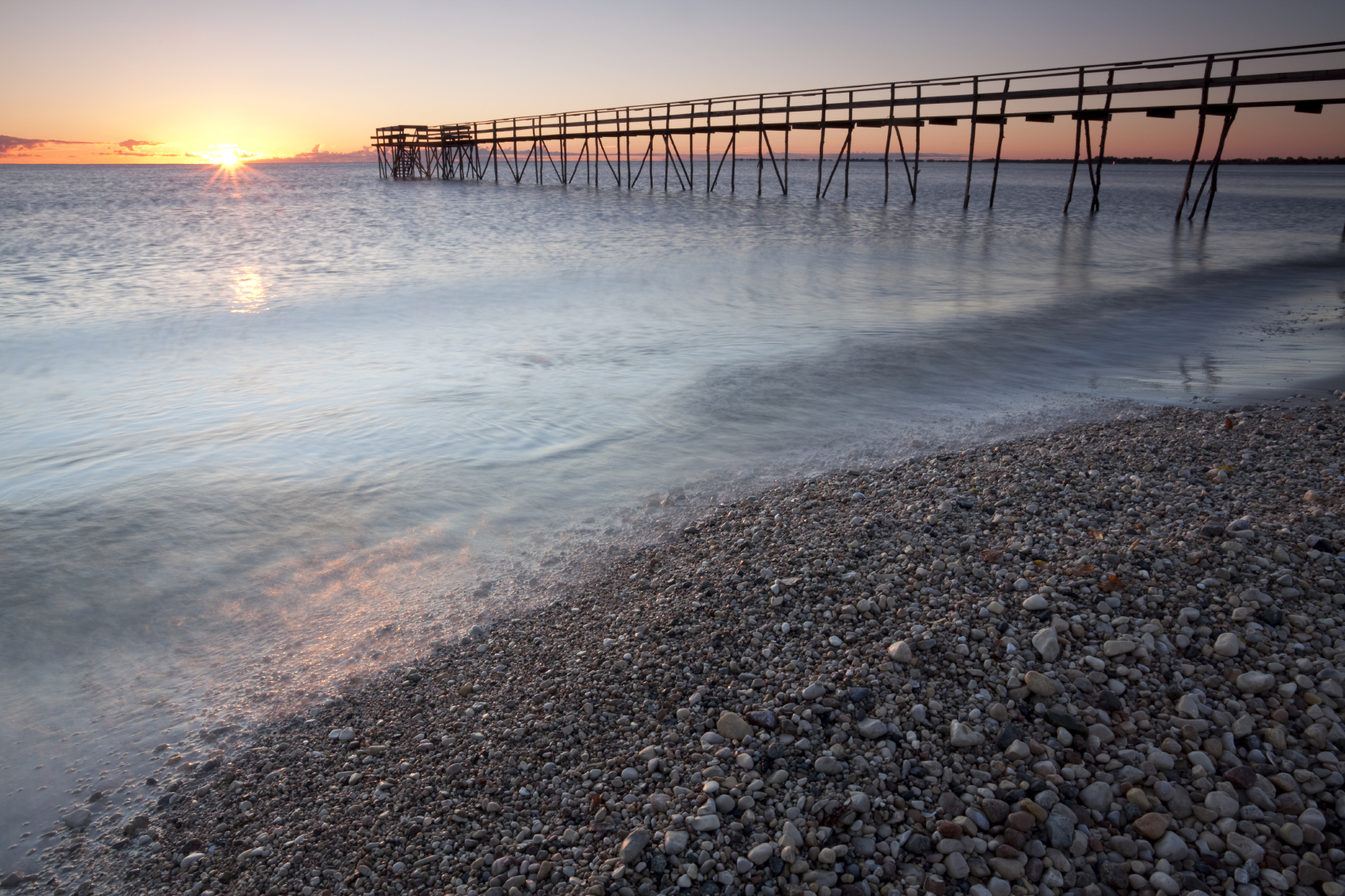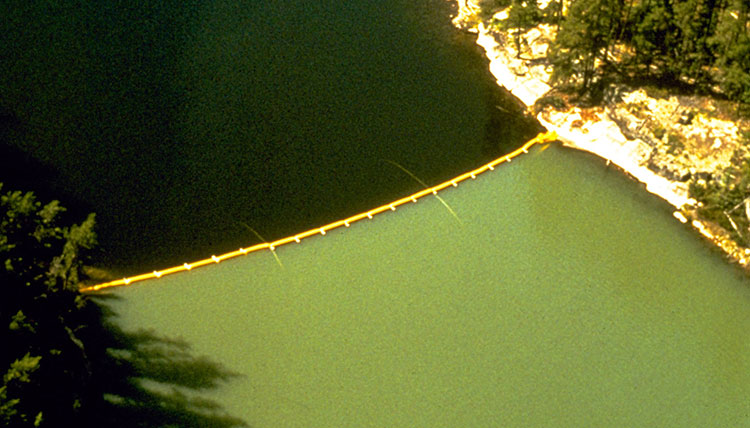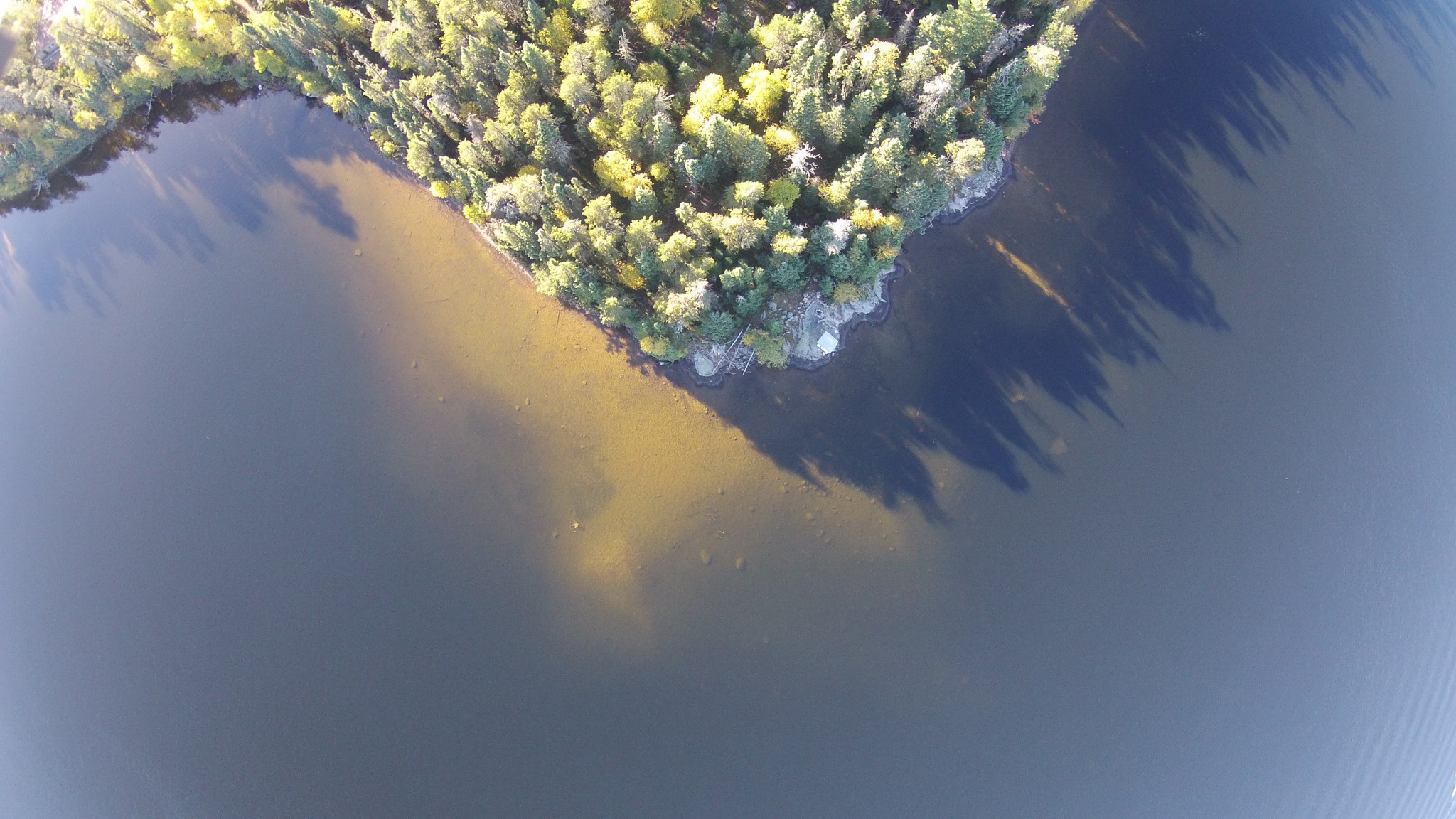Research May 10, 2016
“My lake is showing signs of algal blooms. What can I do?”
By Scott Higgins, Research Scientist
Here’s the problem…
A few weeks ago, a colleague forwarded an email to me. It went something like this:
“My lake has entered into what I now know is an advanced state of eutrophication, and the water has recently tested positive for algal toxins. We [the local homeowners] know that excess nutrients are to blame and we know the likely sources, but we have little direct control over them. Are there in-lake solutions that would be effective at treating this problem? Would aeration work?”
Lakes, estuaries and coastal marine ecosystems around the world are affected by excessive nutrients in the water (“eutrophication”), and it is a serious and costly problem. Algal blooms occur, and the large accumulation of algae eventually dies and sinks to the lake bottom where it is decomposed by bacteria, creating low-oxygen conditions that are unsuitable for fish and other aquatic life.

Treating the symptoms or the causes?
Surprisingly, while there has been ample opportunity to rigorously test in-lake remediation methods, there is little evidence in the scientific literature to determine their effectiveness. An additional problem with most in-lake remediation approaches is that they treat the symptoms of the problem, not the causes.
So what are the causes? In most lakes, algal blooms are caused by too much phosphorus, and, as a society, we have already made steps toward reducing the amount entering lakes. In the 1970s, thanks to experiments such as those conducted at the Experimental Lakes Area, phosphates in detergents were banned to help combat this problem and many changes to treatment plants and management practices were implemented. Unfortunately, in many places, too much phosphorus is still getting into our lakes. Our problem is not a lack of knowledge. Our problem is how reconcile the competing interests that lead to phosphorus loadings and how to implement what we already know to be the best management practices.

A success story
We know that solutions do exist. A few months ago I was reminded of a success story in Clear Lake, Manitoba. There were concerns that phosphorus loading from several sources, including effluent from the town of Wasagaming, would lead to a deterioration of water quality in Clear Lake. The town circulates their effluent through Ominik Marsh and South Lake, and there was concern that phosphorous from these sources could make it into Clear Lake. Several studies were undertaken and a community plan was developed to restrict the amount of phosphorus entering the lake and monitoring for future changes.
The Clear Lake story was a success for several reasons: the local community identified water quality and water clarity as something they wanted to preserve; they commissioned several studies that correctly identified the underlying causes and risks; and the community acted together in developing a community plan.
What about those in-lake solutions?
So where does this leave the concerned citizen who penned the email above? “Are there in-lake solutions that would be effective at treating this problem? Would aeration work?”
While in-lake solutions do not address the root cause of the problem, they can help deal with the symptoms and speed up recovery in many circumstances, so long as they are coupled with actions to reduce external phosphorus loads. The methods that work best are those that target the reasons why lakes respond slowly to reductions in external phosphorus loads.
In a nutshell, much of the phosphorus entering a lake is taken up by algae, which eventually die and sink to the lake bottom. At this point there are a few things that can happen: the organic matter containing phosphorus can remain buried; the phosphorus can be released from the organic matter but form chemical bonds with iron or other elements in the sediments; or the phosphorus can be released back into the lake.
This latter process, commonly referred to as “internal loading” or “legacy phosphorus,” can occur through several means. When bottom waters in a lake are well oxygenated, phosphorus remains tightly bound to iron and stays in the sediments. However, when these bottom waters go anoxic, phosphorus is released from the iron and it can diffuse back into lake water. One in-lake remediation method is to ensure bottom waters stay well oxygenated, hence the reference to “aeration” in the concerned citizen’s letter.
A second approach that has worked in some lakes is called sediment capping. Typically, a clay material that has properties that bind phosphorus are added to a lake to create a “cap” over top of the sediments, preventing phosphorus from leaching back into the lake.
In some cases, internal loading can result from fish such as carp that stir up the sediments, allowing the phosphorus to be released. In these cases, aeration and sediment capping will likely not solve the problem. Instead, fishing out these carp could help reduce the amount of phosphorus that re-enters the lake from the sediments. As noted above, however, none of these in-lake solutions treat the root cause of the problem: too much phosphorus added to the lake from external sources.

Prevention is better than cure
As with many problems, the best solution (and a much cheaper option) is prevention. If water quality begins to deteriorate, don’t lose hope. Just remember that other communities have confronted the problem and succeeded.
Do your best to get the facts: Has the province or another agency collected water quality data on your lake? Are there citizen science programs available in your area that would allow you and your lake association to take control and ensure annual monitoring is undertaken?
Once you have the facts, it’s time to make a plan to restrict the amount of phosphorus that enters into your lake and streams. This effort will work best if you include all local stakeholders in the process, including those whose lands contain nutrient sources. Potential sources should be identified and, where possible, voluntary “best management” actions undertaken. Keep up with your monitoring efforts to measure your success, and understand that it may take a number of years for the lake to respond.
In-lake remediation options are likely to be costly and their effectiveness uncertain, so it is best to do your homework and ensure that any such approach fits your circumstances. Ask the suppliers for proof that their product has worked in a lake similar to yours, and importantly, ask for references.